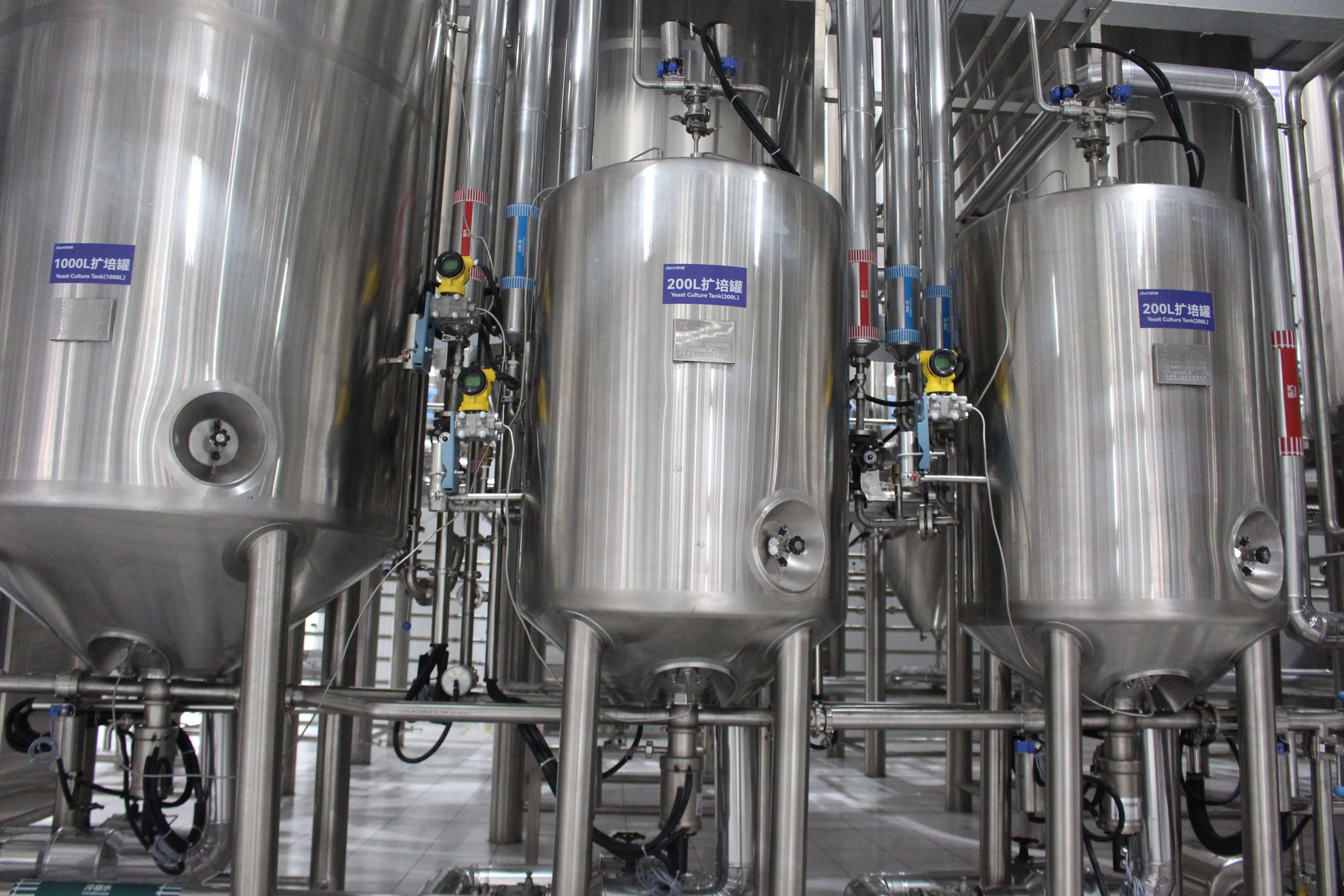Introduction

Beer yeast propagation is a fundamental process in brewing, essential for ensuring consistent fermentation and achieving desired flavor profiles in beer production. This blog delves into the crucial role of quality control (QC) throughout the beer yeast propagation process. By emphasizing key factors and best practices, brewers can optimize yeast health and maintain high standards of beer quality.
Understanding Beer Yeast Propagation
Beer yeast propagation involves cultivating yeast cells to increase their population before pitching into wort for fermentation. This process typically includes:
- Yeast Strain Selection: When choosing a yeast strain for propagation, brewers consider its ability to impart specific flavors such as fruity esters or spicy phenols, which are crucial for defining beer styles like Belgian ales or Hefeweizens. Additionally, yeast strains vary in their ability to ferment under different conditions, such as temperature variations and alcohol tolerance levels, influencing their suitability for specific brewing processes and beer types.
- Propagation Medium: Nutrient-rich media play a pivotal role in supporting yeast growth during propagation. Wort, the liquid extracted from malted barley during brewing, provides essential sugars, amino acids, and vitamins necessary for yeast metabolism and reproduction. Alternatively, yeast extract peptone dextrose (YPD) medium offers a standardized, highly nutritious environment that ensures consistent yeast growth and health, essential for producing high-quality beer with predictable fermentation characteristics.
- Aeration and Temperature Control: Proper aeration and temperature control are critical during beer yeast propagation to optimize cellular respiration and growth. Aeration ensures that yeast cells receive adequate oxygen, which is essential for synthesizing sterols and unsaturated fatty acids, crucial components of yeast cell membranes. Maintaining optimal temperatures—typically between 20°C to 30°C (68°F to 86°F)—promotes enzymatic activity and facilitates rapid yeast reproduction, ensuring robust fermentation performance and flavor development.
- Monitoring Growth Phases: Yeast undergoes distinct growth phases during propagation, each characterized by specific metabolic activities and cellular changes. The lag phase marks the initial adaptation of yeast cells to the propagation medium, followed by the exponential phase where yeast rapidly multiply and reach peak cell density. The stationary phase indicates a plateau in growth as nutrients deplete, signaling readiness for pitching into fermentation vessels. Monitoring these phases through cell counting and viability tests ensures yeast health and readiness, crucial for consistent fermentation outcomes and beer quality.
Importance of Quality Control in Beer Yeast Propagation
Quality control is critical at every stage of beer yeast propagation to ensure:
- Purity and Viability: Confirming yeast cells are free from contaminants and maintaining high viability percentages (>95%).
- Genetic Stability: Preventing mutations or changes in genetic makeup that could alter fermentation characteristics.
- Cell Count and Vitality: Accurately quantifying yeast cells and assessing their metabolic activity to determine pitching rates.
- Sanitation Practices: Maintaining clean environments and equipment to prevent microbial contamination, which can affect yeast health and beer flavor.
Factors Influencing Propagation Quality
Several factors impact the success of beer yeast propagation:
- Nutrient Levels: Adequate nitrogen, vitamins, and minerals are crucial for yeast growth and fermentation vigor. Nitrogen supports protein synthesis, vitamins act as coenzymes in metabolic pathways, and minerals play roles in enzyme function and osmotic regulation. Ensuring optimal nutrient levels in the propagation medium promotes healthy yeast cells capable of efficient fermentation and desirable flavor development in beer.
- pH and Temperature: Monitoring pH levels is essential as yeast activity is pH-sensitive; deviations can disrupt enzyme function and nutrient uptake. Temperature control, typically between 20°C to 25°C (68°F to 77°F) for ale yeasts and 10°C to 15°C (50°F to 59°F) for lager yeasts, ensures optimal enzymatic activity and minimizes stress on yeast cells. Adjusting pH and temperature throughout propagation supports consistent yeast growth and maintains fermentation efficiency.
- Oxygenation: Proper aeration balances oxygen availability for yeast growth without inducing oxidative stress. Oxygen is essential during propagation for sterol and unsaturated fatty acid synthesis, crucial for maintaining yeast cell membrane integrity and fermentation vigor. Controlled aeration practices, such as gentle stirring or agitation, ensure yeast cells receive sufficient oxygen while preventing detrimental oxidative effects that can compromise fermentation performance and beer quality.
- Yeast Handling: Minimizing cell damage during yeast transfer and pitching is critical for maintaining cell viability and fermentation efficiency. Techniques such as gentle agitation, avoiding sudden temperature changes, and using sanitized equipment reduce stress on yeast cells. Proper handling practices preserve yeast health and functionality, ensuring consistent fermentation outcomes and contributing to the overall quality and flavor profile of the brewed beer.
Quality Control Parameters in Yeast Propagation

Understanding these key aspects of beer yeast propagation lays the foundation for effective quality control measures throughout the brewing process.
| Parameter | Acceptable Range | Monitoring Method |
|---|---|---|
| Viability | >95% | Microscopic examination |
| Cell Count | 10-20 billion cells/L | Hemocytometer |
| Genetic Stability | No significant mutations | PCR analysis |
| Contamination | Absence of bacteria and wild yeast | Plate culture |
Conclusion
In conclusion, maintaining stringent quality control measures in beer yeast propagation is crucial for ensuring consistent fermentation outcomes and achieving desired beer characteristics. By focusing on purity, viability, genetic stability, and environmental factors, brewers can optimize yeast propagation processes and enhance overall brewing efficiency.
FAQ
Q: Why is yeast propagation essential in brewing?
A: Yeast propagation allows brewers to cultivate sufficient quantities of yeast with desired fermentation traits, ensuring consistent beer quality and flavor.
Q: How can brewers assess yeast viability?
A: Yeast viability can be assessed using methods such as vital staining or microscopic examination, where viable cells appear intact and metabolically active.
Q: What challenges do brewers face in yeast propagation?
A: Challenges include maintaining sterile conditions, controlling fermentation temperatures, and preventing contamination, all of which impact yeast health and fermentation performance.

